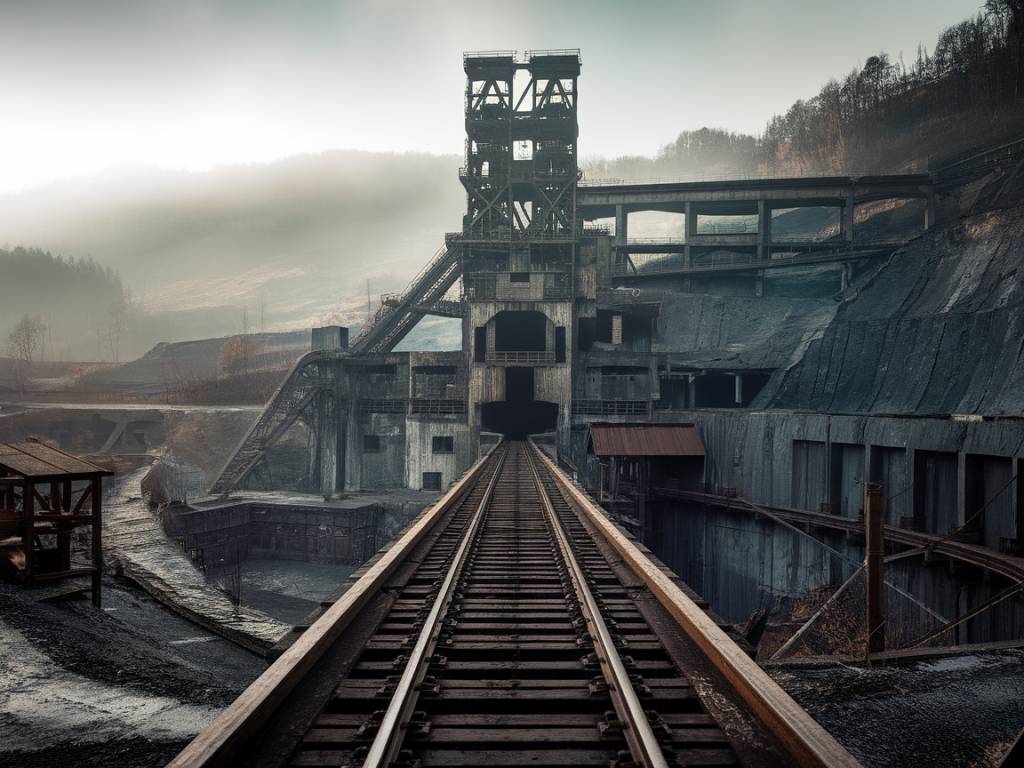The Untold Story: How Coal Mining Shaped Welsh Heritage
Wales is a land of breathtaking landscapes, enduring traditions, and a culture steeped in history. It’s easy to picture rolling green hills, ancient castles, and charming villages, but beneath this picturesque surface lies a history forged deep underground—in the coal mines that propelled Wales into the modern age. Coal mining didn’t just shape the Welsh economy; it left an indelible mark on its heritage, culture, and even its identity. Let’s journey through the depths of this fascinating legacy.
The Backbone of an Empire
During the Industrial Revolution, Welsh coal became the lifeblood of the British Empire. South Wales, in particular, transformed into one of the world’s most important coal-producing regions. The black gold extracted from the valleys fed steam engines, powered factories, and lit up cities. But what made Welsh coal so desirable? It was its quality—anthracite, often referred to as « hard coal, » burns hotter and cleaner than other varieties. This made it an indispensable resource for industries ranging from steel production to transportation.
By the mid-19th century, coal was more than just a resource in Wales; it was the foundation of a way of life. Towns and villages sprung up around mines, creating tightly knit communities bound by a shared reliance on this dangerous but essential work. Have you ever wondered what it feels like to have your entire world shaped by what lies beneath your feet?
A Grueling Life Below Ground
Life for coal miners in Wales was anything but easy. Days began before sunrise and ended well after dark, with men—and in earlier periods, even children—descending into the earth armed with little more than basic tools and flickering lamps. The work was physically demanding, the conditions perilous, and the risks ever-present.
Explosions, cave-ins, and toxic gases were constant threats, yet mining wasn’t simply a job; it was an identity. Entire families relied on mining, and traditions surrounding the profession were passed from generation to generation. In many ways, the camaraderie and resilience of miners and their families formed the backbone of Welsh society.
To add a more personal dimension to their stories, one can look to the poignant anecdotes shared by miners themselves. “My father’s hands were always black,” recalls one descendant of a Welsh miner. “No matter how hard he scrubbed, the coal dust stayed with him, a badge of honor and struggle.”
The Rise of Mining Communities
As the coal industry boomed, entire communities grew up around it. Rows of terraced houses sprang up near collieries, often built by the mining companies themselves. Schools, chapels, and social clubs followed, creating tight-knit towns where everyone’s lives revolved around the mines.
Wales has a rich tradition of music, and mining communities played a key role in preserving it. From the haunting harmonies of male voice choirs to the rousing hymns sung in chapels, these cultural expressions were born out of the struggles and solidarity of the mining population. Imagine the sound of a choir echoing through a valley, each voice telling a story of resilience—that’s the legacy of mining culture in Wales.
A Landscape Forever Changed
The coal industry left its mark not only on people but also on the land itself. The Valleys of South Wales are dotted with remnants of their industrial past—slag heaps, abandoned collieries, and the skeletal remains of machinery long forgotten. These sites have since been reclaimed in many places by nature, their overgrown greenery now hiding the scars they once bore.
However, initiatives to preserve this industrial heritage have gained momentum. Attractions like the Big Pit National Coal Museum in Blaenavon allow visitors to descend into a real coal mine, offering an immersive look at the conditions miners faced. When you stand underground in those dimly lit tunnels, you can almost hear the echoes of a pickaxe meeting stone—a tangible connection to history.
The Decline of Coal and Its Aftermath
As the 20th century progressed, the demand for coal dwindled. Cleaner energy sources emerged, and the social and economic landscape of Wales began to shift. Mines closed, and the valleys that were once bustling with life faced significant challenges, including unemployment and depopulation.
Yet, even amid hardship, the spirit of these communities has endured. Today, the legacy of coal mining is remembered not with bitterness but with pride. For many Welsh people, it serves as a reminder of their ancestors’ resilience, ingenuity, and determination.
Preserving Wales’ Mining Heritage
With coal mining no longer at the core of Welsh life, efforts to preserve its history have gained importance. Museums, historical societies, and community events ensure that this chapter of Wales’ story isn’t forgotten. Places like the Rhondda Heritage Park offer visitors a chance to experience life as a miner and understand the profound impact of the coal industry.
And it’s not just about museums. Local festivals, books, and oral histories keep the spirit of mining alive. Have you ever attended a Welsh Eisteddfod? There, the influence of mining on songs, poetry, and art is unmistakable—a culture indelibly shaped by its industrial past.
A Heritage That Lives On
Coal mining may have receded into history, but its legacy endures in countless ways. It can be seen in the architecture of mining towns, heard in the voices of choirs, and felt in the tenacity of the Welsh people. Above all, it’s a story of humanity—of hardship and hope, community and courage.
So the next time you admire Wales’ sweeping valleys or lose yourself in the melody of a choir, remember the coal miners. Their struggles and triumphs are woven into the very fabric of Welsh heritage—a poignant reminder that what lies below ground shapes what’s above.

